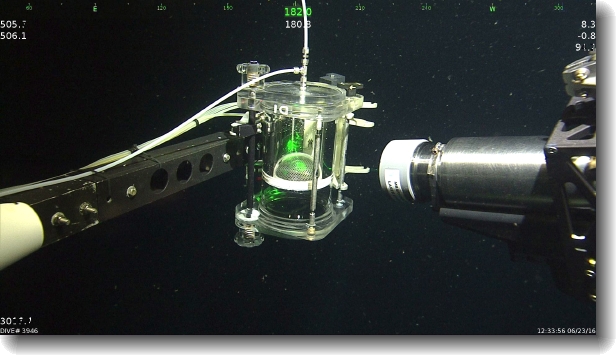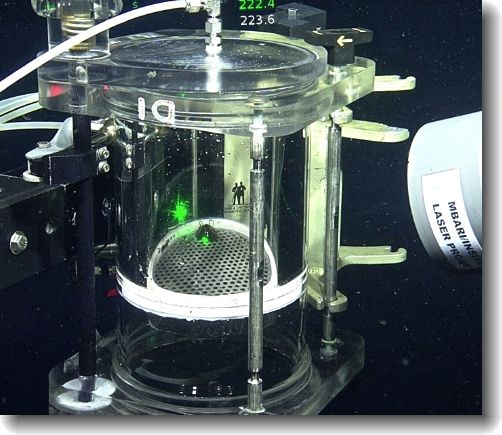Special Projects: MBARI Collection Tube
We were contacted by the Monterey Bay Aquarium Research Institute (MBARI) for a project called a collection tube - the flanged cylinder pictured on the right. This tube was called out with overall length tolerances of +.0", -.015" , not exactly trivial when tooling hot glass. We sent the finished tubes and asked if MBARI could share any pictures of the glass in action. We were delighted and humbled to see the images below, sent in by Peter Walz, Senior Research Technician at MBARI. We had a couple of questions about the science, and Peter generously sent us the information below, as well as the images below.
Peter writes;
"The midwater region of the world's oceans (500-2000 meters depth) is the largest habitat on our planet and part of the mission at MBARI is to both explore and better understand the deep sea, and also develop new tools and technology for scientists.
"Midwater animals are typically transparent, and have evolved to maintain a balance of water filled tissue over a large range of temperatures and pressures. They have accomplished this in part by modifying the molecular structure of the seawater. Using Raman spectroscopy we can measure these changes in the water molecule vibrations. This research is focused on understanding the physics and chemistry of midwater animals, and also predicting how these animals may have to respond to a changing ocean environment (i.e. lower oxygen, higher temperatures, lower pH)."
In the image below, the upper left number is depth in meters; they were working between 500 and 800 meters that day.Here is more info about the ROV Ventana, shown on the right with our glass collection tube mounted in the "left arm".

;Peter continues;
"The Raman spectra of water can be measured and is easily distinguished. We have been using this ROV based deep sea Raman spectroscopy system for about 15 years now, and have found a variety of novel and interesting applications, and learned how to optimize the system to minimize "noise" or other spectral artifacts. For collection of spectral data we turn off the ROV lights as they do interfere with the spectroscopy. The glass is transparent to the Raman signal - which is why we have made the collection chamber out of glass. The usual chamber material is acrylic and that has a very strong Raman signal and we would not be able to see anything beyond the chamber wall if it was acrylic. Most plastics create a strong Raman interference and/or fluorescence."
"There are many examples of unique deep sea chemistry that can only be studied in-situ, because of the extreme pressure and low temperature conditions found in the deep sea. MBARI is pioneering these techniques and methods with the use of ROV's.
"We have had a few ROV dives now and successfully deployed the glass tubes you fabricated earlier this year - see attached photos. I managed to get your logo properly oriented and in view of the main camera.
"Our research project involves using laser Raman spectroscopy to look at the tissues of deep sea midwater animals (jellyfish). The glass tube worked well in the sampler and we plan to do more of this type of research in the next year."
"Thanks to Adams and Chittenden for your expert glass fabrication, and working with us to develop this research tool."
Best regards -
Peter Walz
Sr Research Technician
MBARI
Mbari was just referenced in an amazing 5/4/2017 article here.



Thank you Peter! Once again, we are delighted that glass continues to be relevant, and to be replacing plastic with glass.....
Photos of chamber in action © MBARI.
And a PDF on their results is linked here.


